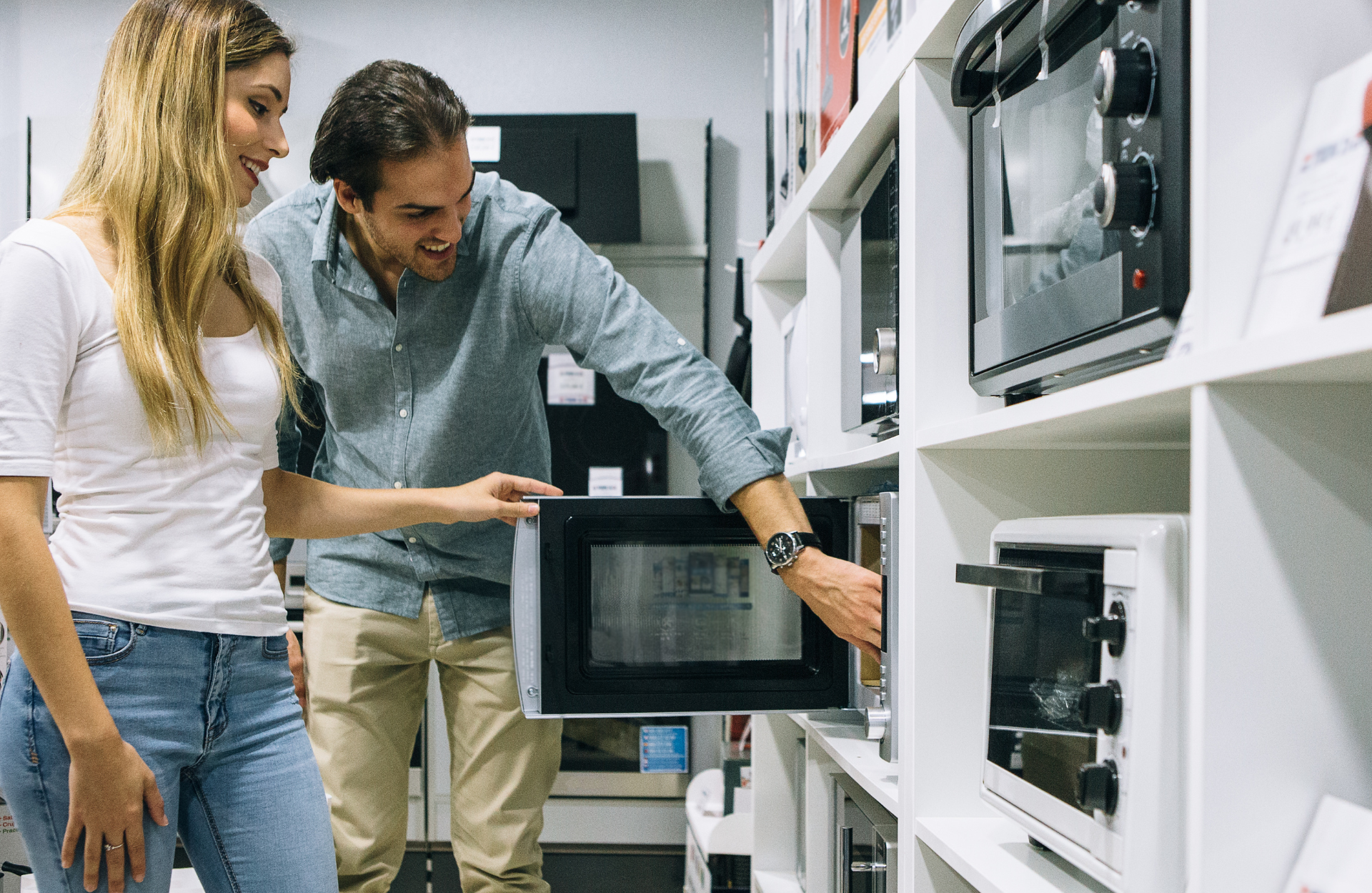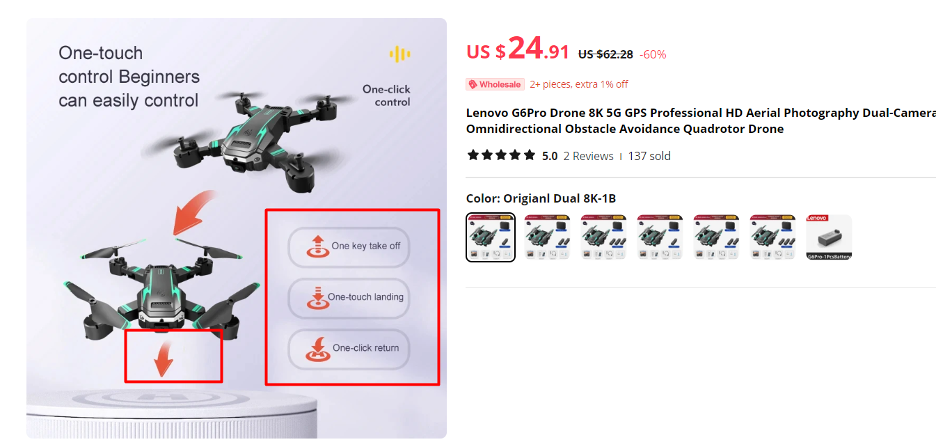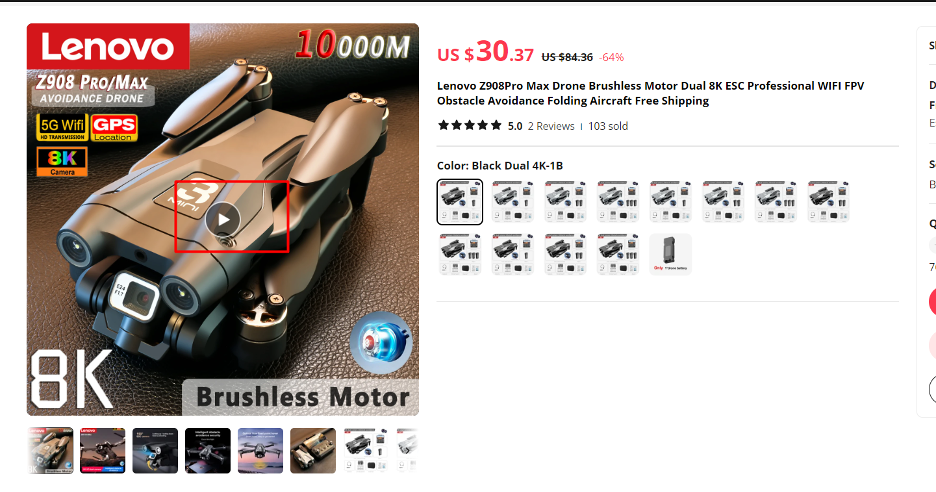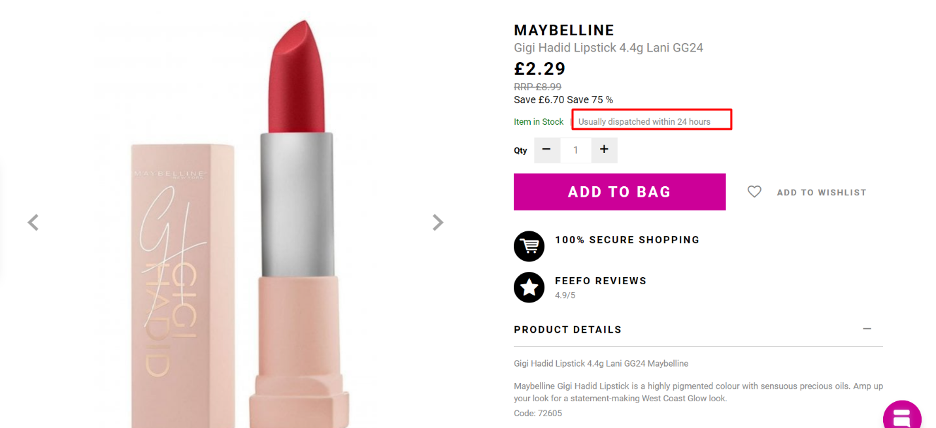
Understanding dropshipping and steps to launch your own online business

You have a great-looking store but no sales. If you are in this situation, you are not alone. And surely, there is a reason why your ecommerce store is not converting—it has to be your product page.
In this article, I will show you what it takes to increase your product page conversion rate in your Shopify store. You will learn:
In the end, I’m confident that you should be able to make changes to your product pages, and successfully see an increase in sales.
Before we dig into the techniques to increase your Shopify product page conversion rate, we must take a look at the basic components of one. These things may seem obvious to you, but you should not be surprised to know that many dropshippers and e-commerce entrepreneurs do not have all these components that optimize Shopify conversion rates.
A product headline is the title of the product. While all sellers have this, the big difference in performance lies in how the title is written.
Consider these two:
The second one is more likely to perform for two reasons: search engine optimization and consumer perception. If you use the second product title, your link is more likely to appear in Google Search than if you only used the term “red rubber shoes.”
Why? Because you will never know if a person would use the words basketballs, tennis, or soccer in their search terms.
If a person finds himself on your product page, the term “red rubber shoes” does not make a significant impact on his purpose. But with a word like basketball, a person may think, “I play basketball,” or “My son plays basketball.” If so, you are giving him a better reason to consider buying what you offer.
Consider your product image as your store display, similar to what a physical store has where they put their best products inside a glass case, or their shoes on display in racks.

In a physical store, I can get the shoe and inspect it. But I cannot do that in the online world. Because of this, you must show different angles of your product in separate images.
Here are the characteristics of excellent product images:
Product images are available from your supplier. If they do not have enough, you can always ask them for more photography. In addition, you can hire someone online to edit the images to make them clearer and more professional. Flair.ai is a great free tool to generate better product images.
You must standardize your product descriptions. Ideally, you must have an opening paragraph for each one. This opening paragraph is your pitch, telling the consumer why they need to buy this product.
The next section is a bullet point of features and benefits. This is where you explain, in short detail, what makes your product unique.
Then, you must have a call-to-action—either you are asking the consumer to add the product to the cart now or tell him of your other existing offers, such as bundles, discounts, etc.
You can generate a decent product description with WriteSonic or, if you know how to use it properly, with ChatGPT.
The product price must be big and easily seen on the screen. For desktop users, the price must be at either the left or right side of the image and below the title. For users on mobile devices, make sure that the price is below the product image or above it.
Consumers should not make an effort to look for the price. It has to be there, easily seen, as it is a vital component when they make decisions. If you have a sale, make the prices bigger or put them in the photo for easy viewing. Make it a point to highlight the price cut, too.
Product reviews add credibility to your store. Without them, a consumer will certainly hesitate. If product reviews are not available, there are several ways by which you can obtain them, which we’ll discuss in the succeeding section. This is a great way to optimize the conversion rate in your Shopify store.

The first thing a customer sees in your store is your product image. As such, you have to do what you can to present your product in a really good light.
Here are some tips about enticing images:
Sometimes, your supplier may not have the images that you need. Whatever it is that you do, do not copy an image from another seller. It is unethical, and if you do this, you are opening a door to a world of legal problems.

Videos catch more attention and can explain your products better. In addition, videos allow you to create a personality for your products. The product becomes more appealing to the potential customers, which increases the conversion rate significantly.
Here are some tips on how to make product videos:
A video can be an expensive thing to do. If you have so many products, you do not need to create a video for all of them. What you can do instead is use still images, and then turn them into a video. You can use all sorts of intro and outro animation to bring products in and out of the frame.
If you use images, do not forget to highlight the benefits of the product. You can also put several still images of the same product in different colors to show that you have variants. For example, you can use still images of the same shoe but with different colors and “fly” them into the frame.
If you have UGC videos of the product on TikTok or Instagram, you can use the app ReelUp to integrate them to your Shopify product page. This also helps provide social proof for your web page.
The ad copy is one of the most important things in your ad. You may have a video or a high-quality image, but if your words are not convincing enough.
Here are some tips for writing ad copy:
It is also advisable to appeal to your reader’s emotions. Try to attack emotions of fear or greed. For our mosquito product, you can say something like “Thousands of children die of dengue every year. Do not let this happen to your kids.” Just make sure you back this up with data.

One thing that many dropshippers always tend to avoid is clarity on shipping and refund. They try to hide this behind a specific page, which I do not recommend.
Why is this even necessary? Well, you are not Amazon. Amazon has millions of customers and customers already know that they can expect protection. With your store, people have no clue what buyer protection you offer.
At the very least, you must have a statement at the bottom of your product page telling the customer what to expect. You can say something like “We process refunds within seven days. No questions asked!”
Here are the benefits of clarity in shipping and refund:
You do not need to show your entire refund policy on the product page. You can add a simple line like “read our refund policy here” and then hyperlink your refund policy page for your customer to read.
Some people think that clear shipping timelines and rates are a bad approach, but we beg to differ. It is better to be transparent than to lie. A customer who sees your shipping and refund policies and orders is one that you will have no problems with. If you lie, you will have to deal with a lot of headaches later on from unhappy customers.
Product transparency refers to being upfront and honest about what you sell. Usually, this information is already baked into your list of product features. However, this is not enough. You have the responsibility to tell consumers if your product can harm, which you can put in a “warning” section.
Here are some examples of things you can mention:
Why even bother doing this? You should because customers have a right to know what they are buying, how a product endangers them or their children, or how a product affects the environment.
Product transparency is difficult to write, but it must be available on the product pages of your supplier. If not, you can always ask.
Additionally, people are more willing to buy environmentally friendly products. So, if you sell items online and get these items from a supplier, make it a point to ask if they use recyclable plastic, or if they use biodegradable materials.
Another thing you can do is get standard warnings. For example, if you know that your product uses lithium batteries, write a section about how to handle lithium batteries or how to dispose of them properly. This simple section will encourage customers to take action, knowing that you care about their health, safety, and the environment.
In essence, you must disclose vital information to your consumers about your products. Product transparency can do great things for your brand. In some countries, it is the law, so it is best to comply, or you will get into legal trouble.
Good salespeople know that buyers typically object to many things. In a face-to-face sales environment, this should be easy to tackle, as you have the opportunity to address a customer’s concern. But in dropshipping? You need to address the objection based on assumptions because you will never talk to your consumer.
For starters, here are the most common objections from buyers:
Even if you put a chat box on your product page, potential customers are not likely to use this chat feature. They will not even bother asking. As such, you need to handle this objection through your product page.
Here are some ways to do it:
Finally, budget may be a problem, so you can handle that by offering discounts or by offering buy-now-pay-later programs. If you ever offer a discount, make sure that this discount does not last long—set a time frame for when the discount will be over to pressure your site visitor to make the purchase now.
Feedback rating is an important social proof that you must use to improve your conversion rate on the product page. This can be a problem if you have not sold anything yet. Thankfully, there is something you can do to show feedback that did not necessarily come from your sales.
Some apps in the Shopify app store allow you to import customer feedback from the supplier, especially if the supplier is a seller from AliExpress. In this process, you are merely transferring reviews from AliExpress to your store. AliReviews is an example of an app you can use, but there are many more to choose from.
What you can do is encourage your buyers to leave a review. For example, you can offer a 10% discount on their next purchase if they make customer testimonials for their purchases. This incentivizes your buyer to leave a review, and it is important, considering that only a handful of buyers leave a review.
From here, you can start accumulating reviews for your product, thereby resulting in social proof. Of course, give a discount only for the first review so as not to drastically reduce your profit margins. Social proof, increases the conversion rate on your landing page significantly.
Another thing you can do to increase conversions, which is a tad expensive, is to put an endorsement on your product page from influencers. Big companies have no issues doing this—it is not unusual to see the face of Lebron on Nike’s ecommerce site, right?
As a dropshipper, you can do this in two ways:
On your product page, you must put that screenshot in the product description body and the product image carousel. Make sure that it cannot be missed by a site visitor. In addition, I recommend that you add a caption to it, telling the reader who this influencer is and how to find her social media account. That alone not only increases the overall Shopify conversion rate, but it also attracts more visitors to your online store from the influencer post.
It is difficult to find an influencer who is willing to do this for your store. I have to tell you right now that this will cost you money. However, you have to see this in a positive light—you are investing in your store’s credibility.
If you are in the beginning stages of your ecommerce business, my recommendation is to work with an influencer, and then use the images in your hero banner, your landing page, and some of our product pages. You can work out a deal with the influencer to take several photos showcasing different products.
If you do this, you do not need to pay several influencers for different products. Just work with one person and make the most out of it. As you progress and make more sales, you will have more finds to spare for your influencer campaigns.
This is also commonly referred to as FOMO, and it is a psychological phenomenon where many humans want to have what others have. It is a version of keeping up with the Joneses.
Here are some FOMO tactics you can use:
There are Shopify apps you can use for the countdown timer. Specifically, it is a timer that you set, like for a three-day sale. Anyone who goes to this product page will see a countdown that represents until the sale is over, making the site visitor want to buy it now.
Some countdown timers are sophisticated. For example, you can use a countdown timer that offers a sale for each product for 24 hours only. This countdown timer can detect an IP address.
So, if Customer A from America visits your site for the first time, he will see the countdown timer for 24 hours. 12 hours later, he comes back, and then he will see he only has 12 remaining hours to take advantage of the deal.
Meanwhile, if Customer B from America or another country visits your store after Customer A, this customer will see 24 hours also. Essentially, this countdown timer treats each site visitor differently.
You do not need to buy this software program now—you can use simple versions. As an alternative, you can also just put a banner in your store hero or on the product page. However, putting a manual sale announcement on each product page is tedious.
The good news is that many apps on Shopify will allow you to create banners that will show on all regular web pages and product pages. Get these Shopify apps and use them to create a FOMO in your product page marketing strategy.
Finally, create offers that are hard to resist. Product discount is one, especially if the discount is significant. A usual approach is to bump up your price to twice your intended selling price and then cut it down to half to make it appear like the product is on sale for 50%.
Let us say that a product you are selling costs $25 in China. You want to sell it for $50 for a profit margin of $25. Instead of selling it for $50, you offer it for $100, and then slash that price to $50, making the customer think that he is getting a discount of 50%—an offer that is difficult to refuse.
Is this a bad practice? Many big stores do this, including sellers on Amazon, especially during the Black Friday sale. it may sound unethical, but it is not illegal, considering that as a seller, no law puts a ceiling to the price you want to sell a product for.
Here are more examples of offers that are difficult to resist:
There are many other ways to do this. One thing I recommend that you do is to search for your competitors, and then offer what your competitors are not offering. In addition, always be on the lookout for what other companies are offering—you will pick up some excellent marketing offerings that you can apply to your products. Do they offer free shipping? How do their ecommerce websites look like? The Ecommerce industry is competitive, but competition is not necessarily a bad thing. You can learn a lot from your successful competitors by observing and copying them.
What is the next step from here? I suggest that you take a look at your product pages and check if you have the ten components that increase your average conversion rate. If not, I highly recommend that you begin working on it.
Not all ten conversion rate optimization strategies need to be present. For example, there is no need to hire an influencer for each product. What matters is that you start working on each conversion rate optimization tactic until you can implement as many as possible. Many Shopify store owners struggle with this, keep in mind that split testing and analyzing user behavior on your site is crucial to determine if a conversion rate optimization technique works or not. Use Google Analytics or LuckyOrange to get some customer journey insights.


Understanding dropshipping and steps to launch your own online business

Discover top strategies to identify high-demand, profitable products on AliExpress

Learn about strategies that drive traffic to your store, including effective advertising practices

Learn about several proven methods to increase your store sales
Imagine someone asks you who your supplier is, and then you have to tell them it’s a private agent, or AliExpress, or an automation tool that simply buys from AliExpress for you. It’s 2025. Your customers, your revenues, and your profits will thank you.
Get started for free